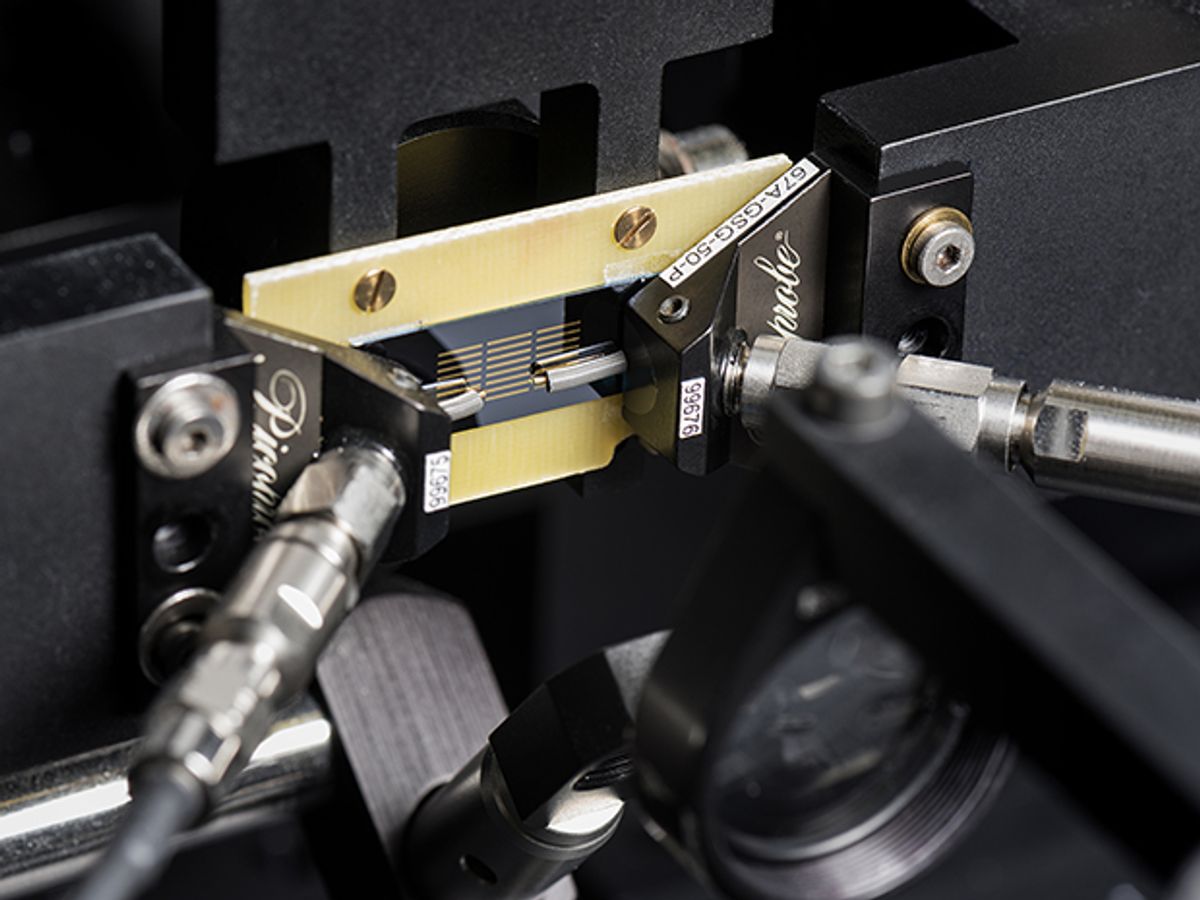Researchers at the Physikalisch-Technische Bundesanstalt (PTB, the German national standards institute in Braunschweig) have used lasers to improve on a widely used and extremely precise instrument for measuring signal strength and phase in electronic components. The new laser-driven terahertz vector network analyzer (VNA) could offer broader frequency coverage and higher resolution at a lower cost than today's instruments.
By using a VNA to precisely plot the signal amplitude and phase over time, designers and troubleshooters can see how signals are transmitted and reflected by components and connectors. This lets them characterize signal scattering and timing shifts that can affect a design’s performance. In addition, national standards authorities use VNAs to define voltage pulse standards for calibrating oscilloscopes, photodiodes, electrical pulse generators, and the like.
In research published in IEEE Transactions on Microwave Theory and Techniques, PTB’s Mark Bieler, Heiko Füser, and Klaus Pierz note that though existing VNAs are extremely precise, they have grown more complex and more expensive as operating frequencies have topped 1 THz.
The PTB team constructed a prototype of a simplified vector network analyzer using a femtosecond laser to generate test signals—short, precise voltage pulses. The pulse travels down a short strip of gold (4 mm long and 0.5 micrometers thick) deposited on a gallium arsenide (GaAs) chip. The pulse’s electric field changes the gallium arsenide’s index of refraction, so another laser beam can track and measure phase and amplitude as the signal travels down the strip. The method can resolve signals traveling both up and down the conductor, so researchers can also measure the signal reflected when the pulse encounters another material in the circuit. By generating pulses over a range of frequencies, the PTB scientists can thoroughly characterize the performance of the “device under test.”
Thanks to its relative simplicity and the falling size and cost of femtosecond laser sources, the researchers say, the new VNA is “relatively cheap,” and offers an “incredibly broad frequency bandwidth spanning three orders of magnitude” with a single piece of hardware. The prototype does have at least one drawback, say its originators: so far, its 40-decibel dynamic range (able to detect signals whose amplitudes differ by two orders of magnitude) is considerably smaller than the best conventional VNAs, which have a range of 120 dB (six orders of magnitude)or more.
The new device uses a flash of 800 nanometer light (produce by frequency doubling the 1600 nm light of an erbium-doped pump laser) to activate a “biased photoconductive gap”—essentially an open switch that closes when hit with laser light—at the beginning of the waveguide. This allow current to flow across the gap, but the switch opens again almost immediately. The resulting 90-fs pulse zips down the circuit. A probe beam, a 1600 nm flash from the same erbium-doped laser, shines onto the GaAs substrate. If the passing pulse has changed the GaAs’s index of refraction, the probe beam’s polarization changes accordingly. This can be measured and (with a little manipulation) reveals the shape, amplitude, phase, and direction of the pulse...and of any signals from internal reflections.
Douglas McCormick is a freelance science writer and recovering entrepreneur. He has been chief editor of Nature Biotechnology, Pharmaceutical Technology, and Biotechniques.



